Potatoes are such a staple of our diet that improving the quality of the potato dishes we cook means greatly increasing the quality of our meals in general. Think about the weight of a brick. Every year the average American eats the weight of 17 bricks worth of potatoes. That’s 110 pounds of potatoes per person, per year. It’s easy to see how it happens. Hash browns at breakfast, chips with our sandwich at lunch, and roasted potatoes with dinner. The next day it’s home fries, a bowl of potato salad, and mashed potatoes. I could easily create a menu for a week without repeating a potato dish once. Maybe it’s because we eat them so frequently and in such quantity that potatoes are so easily taken for granted. Whatever the reason, it’s time we start paying more attention to the potato.
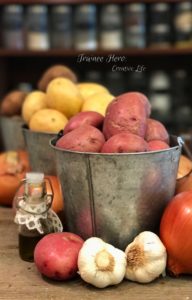
How We Think About Potatoes
Allow me to reminisce for a moment…Bowties tied and cowlicks glued down, Tom and I waited for my dad to arrive with our transportation. He’d generously offered to take care of the car for Spring Formal and assured us that we and our dates would be riding in style. We assumed “take care of the car” translated to “pay for a limo.” I’ve made better assumptions. I’ll never forget the look on Tom’s face or the feeling in my gut when my dad pulled into the driveway. The car was huge. It was as long a limousine and it had four wheels. And that is where the similarities ended. It was a white 1969 Oldsmobile Vista Cruiser. More specifically, it was the white 1969 Oldsmobile Vista Cruiser with custom detailing reading, “AM PM Fife”—advertising for the family convenience store.

Everything about this car was terrible. Everything. It was a rolling nightmare of tricked out station wagon family business marketing. Our dates carefully chose their gowns and spent hours getting ready. They were told they’d be “riding in style.” Somehow, climbing out of the rear facing jump seat of a station wagon in formal gowns and tuxedos wasn’t the “style” we’d imagined. Why am I telling you this? What does this have to do with potatoes?
I’m telling you this because of potatoes. We eat a lot of them without giving them much thought. We see potatoes as little more than a delivery system for gravy, sauce, cheese, or some incredible, out of this world flavor combinations. What’s delivered is important. How it’s delivered is secondary. Think of it this way. The gravies and the sauces and the flavors we work so hard to create are the people going to the dance. The potato we are putting those flavors on is the car. If we are going to spend the time and effort to create great flavors we should let them ride in style. “Spring Formal” flavors don’t want to ride on a “Vista Cruiser” potato.
Changing Our Thoughts About Potatoes
Because of their naturally subtle flavor, making a potato into a limousine is largely about texture. Think about the crispy exterior and the creamy interior of a roasted potato. Imagine the silky mashed potatoes and the rustic bite of smashed potatoes. Envision the smoothness of boiled potatoes and the light crispiness of a perfect French fry. Nailing the textures of your potatoes will take a dish from good to extraordinary.
Before getting into each of the cooking methods it helps to have a basic understanding of potatoes. Enough knowledge to give a TED Talk isn’t necessary but a good foundation will do wonders. We all know that person who can play one song on the piano. They play it well but it’s all they can play. That’s because they know how to play a song, not the piano. Playing the piano means you can apply what you know to any song put in front of you. Knowing how to “play” the potato is far more useful than knowing how to make one potato dish.
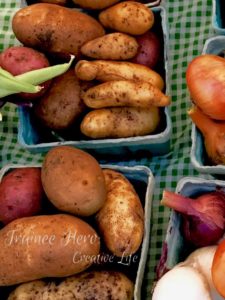
In this post I will describe the characteristics of different types of potatoes and the most effective uses for each type. Future posts will cover each of the most common ways to cook potatoes. I’ll explain the purpose and importance of each step of the recipe enabling you to use that information any time you work with potatoes. You’ll find some of the steps very different from what you are accustomed to doing. However, they are different not for the sake of being different. They are different because we are after different results. Give these ideas a try and share your experiences!
Potato Varieties
The produce department of your local grocery store probably has three or four different types of potatoes on hand. A farmers market may have a dozen. All told, there are over 200 varieties of potatoes. Regardless of variety, potatoes are most commonly served mashed, roasted, fried, baked, or boiled.
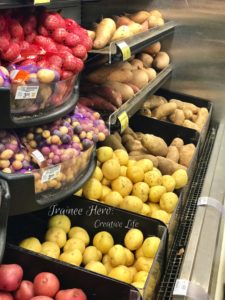
Any potato you choose will consist primarily of two things, moisture and starch. Every potato fits into one of three categories: high starch, medium starch, and low starch. Common examples are Russet potatoes for high starch, Yukon Gold for medium starch, and Red Bliss for low starch.[i] Each category of potato has characteristics that make it perfect for certain cooking methods and less than ideal for others.
Remember that cooking is both an art and a science. The best artists in the world still have to work within the bounds of science. Painters must consider which type of paint to choose for the surface they will work on. Musicians work with a limited number of notes. For us it’s the choice of starch level. Scientifically, we know that starch reacts in predictable ways when exposed to external forces like heat and water. Knowing those reactions makes manipulation of the starch and moisture levels in potatoes possible. It’s nothing more or less than this manipulation that determines the success of a potato dish.
Russet Potatoes
Russet potatoes are generally medium to large in size and have oblong shape. Their skin is brown and thick while the inside of the potato varies from white to a very pale yellow color. Russet potatoes are dry and sometimes described as “floury,” and are light and fluffy. When cooked, the skin becomes very chewy while the flesh of the potato has a mild, earthy taste. They have a high starch/low moisture content. This makes them ideal for baking, frying, roasting, and mashing. These potatoes will not hold their shape well and are not a good choice for dishes like potato salads or casseroles.
Yellow Potatoes
Yellow potatoes include varieties like Yukon Gold, Yukon Gem, and Satina. They are generally round or oblong and range in size from very small to large. The skin of these potatoes is thin and ranges from a light tan to a golden color. As the name suggests, the flesh is generally yellow to gold in appearance. It has a moist, mildly waxy, creamy texture and naturally rich and buttery taste. Yellow potatoes have a medium starch level and therefore hold their shape well. Generally, Yellow potatoes will have a slightly higher sugar content than a Russet, giving them a slightly sweeter taste. They are very versatile and work well when grilled, mashed, roasted, or boiled for salads.
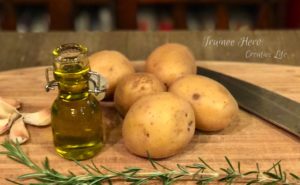
Red Potatoes
Red potatoes are small to medium in size and usually fairly round in shape. The skin is smooth, red, and brightens when cooked. Inside, the potatoes are white with a smooth, moist, creamy, waxy texture. They have a mild taste and like the Yellow potatoes are slightly sweet. Their low starch levels mean that they hold their shape extremely well. Use them for salads, smashed potatoes, soups, casseroles, stews, and for roasting.
White Potatoes
White potatoes are round or elongated and range in size from small to medium. They have a thin, white skin and a dense, white flesh. They are a medium starch potato with a creamy texture. White potatoes have a lower sugar content than Yellows and are only slightly sweet. They will hold their shape and are excellent for frying, mashing, boiling, and for use in salads. The thin skin adds a nice textural component to White potato dishes.
Fingerling Potatoes
Four or five inches long and shaped like a finger, Fingerlings come in a rainbow of colors. You will find orange, red, yellow, white, and purple Fingerlings. They have a firm, dry, waxy texture. Fingerlings have an earthy, nutty, buttery taste and work well in salads, when roasted, and when pan-fried.
Blue and Purple Potatoes
These potatoes range in size from small to medium and are generally either oblong or fingerling shaped. The skins are blue, purple, or red, while the flesh can be blue, purple, pink, white, or lavender. With the exception of the Peruvian varieties, which have a high starch content and a floury texture similar to the Russet, these potatoes are moist and very firm. Like Fingerling potatoes, they have an earthy, nutty taste. Blue and Purple potatoes work best when roasted, grilled, baked, or boiled for salads.
Petite Potatoes
These potatoes have the same qualities as their larger relatives, they are just smaller. They add interesting visual aspects to dishes when served whole after cooking. Use them roasted, fried, or boiled for salads.
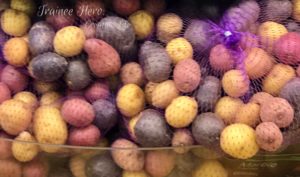
Choosing the Right Potato
You’ve decided what you want to make. All the talk of manipulating and controlling starch levels starts at the grocery store when you choose the right potato. For example, if the potato needs to hold it’s shape after being boiled your choice will be a low starch potato.
But what if you don’t have your choice of potato varieties? What if you are at home and all you have are good old Russet potatoes? In that case your first step changes from choosing the right potato to choosing the right dish. More accurately, let the potato choose the dish.
There is no point in trying to force a potato into doing something it doesn’t want to do. Remember that the goal is to successfully nail down the texture and doing so comes down to manipulating the starch and moisture levels. You will have a great deal more success if you are starting with the right potato. A potato is what it is. Use it in ways that play to its strengths.
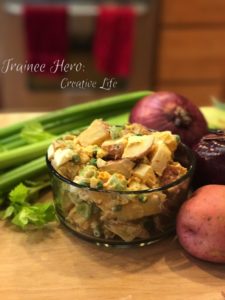
Getting to work with potatoes even more during the coming weeks is exciting. It’s a chance for me to talk about them to people who actually have an interest. Shockingly, people don’t flock to get in on the conversation where the weird guy is rambling about starch levels. I’m going to begin this week with roasted potatoes. Next up, mashed potatoes.
Most of all, I hope you find these posts fun and helpful. Please share your feedback and let me know how it goes.
[i] If you have a potato and are uncertain of what it is called and what category it falls into, a simple test exists to let you know what you’re working with: make a simple solution of water and salt (89% water and 11% salt). Put your potato into the solution. If it floats to the top it is a high starch potato. If it hovers between the bottom of the bowl and surface of the water, it is a medium starch potato. And if it sinks, it’s a low starch potato. Without getting into the science, it is the starch level that makes certain potatoes best for certain cooking methods.
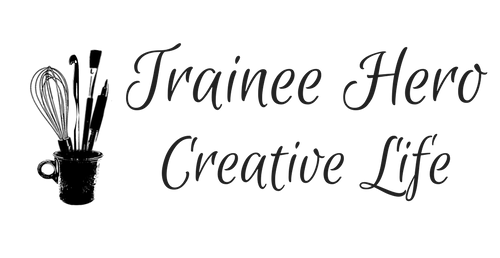
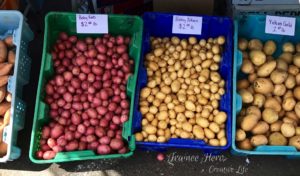
Thanks for your own work on this website. My mum take interest in setting aside time for research and it is simple to grasp why. We notice all relating to the powerful way you provide very helpful tips via your website and therefore strongly encourage response from visitors on this subject matter while our own simple princess is undoubtedly studying so much. Take pleasure in the rest of the year. Your performing a tremendous job.
Thanks for the tips on credit repair on all of this blog. What I would advice people is to give up the mentality that they can buy now and pay later. As a society we tend to do this for many things. This includes vacations, furniture, and items we want. However, you need to separate your wants from all the needs. While you are working to improve your credit score you have to make some sacrifices. For example you can shop online to save money or you can go to second hand stores instead of expensive department stores for clothing.
This is very interesting, You are a very skilled
blogger. I’ve joined your rss feed and look forward to seeking more of
your wonderful post. Also, I’ve shared your website in my
social networks!
I could not refrain from commenting. Exceptionally well written!
9gmyl ejpq2 us9e
This is my first time visit at here and i am truly happy to read everthing at alone place.
fishbiotic amoxicillin 500mg trimox amoxicillin dosage for 2 year old why might a dentist prescribe amoxicillin
lasix dosage elderly drug lasix 40 mg can lasix be given im what is iv lasix
azithromycin alcohol zithromax online usa no prescription how long does zithromax side effects last how do i take azithromycin
ivermectin for acne ivermectin brand buy ivermectin for guinea pigs what can i use ivermectin for
albuterol for bronchitis albuterol purchase without prescription can i buy ventolin over the counter how to order ventolin online
Odszukiwania obecnych porównań wytworów finansowych zakończą się sukcesem, jeżeli tylko i wyłącznie jesteś ochoczy zajrzeć na serwis sieciowy. To strona zadedykowana sferze finansowej, oraz zespolonej zręcznością ubezpieczeniami. Wskazówki, oraz przydatne wskazówki wspomagają na miejscu mojego wyselekcjowaniu bardzo dobrego produktu finansowego osiągalnego na miejscu mojego tradycyjnych instytucjach finansowych, jak i również instytucjach pozabankowych. Strona zapewnia ostatnie wiadomości, bieżące zestawienia statystyczne kredytów, lokat jako różnorodne sumy. Wstęp prekursorskiego wytworu finansowego przez bank nie ujdzie także bez odzewu od stronie. Nasi czytelnicy pozostaną poinformowani o wszelkich deformacjach w naturze bankowości jak i również zasobów. Kontrahenci, jacy mają długu też znajdą w tej okolicy multum kosztownych wiadomości. Od serwisie nie brakuje tematów, jakże wyjść spośród długów, podczas gdy zadłużenie konsumpcyjny gra rację bytu, jak również od jak kłaść nacisk, jeśli zaciąga się pożyczkę w całej parabankach. Wskazane jest wizytować co jakiś czas strona internetowy wówczas jest dozwolone być wyposażonym gwarancję, że okazuje się być się sukcesywnie iz wszystkimi odmianami wprowadzanymi poprzez bazy i naturalnie coś znacznie więcej aniżeli tylko https://finanero.pl/ – finanero opinie.